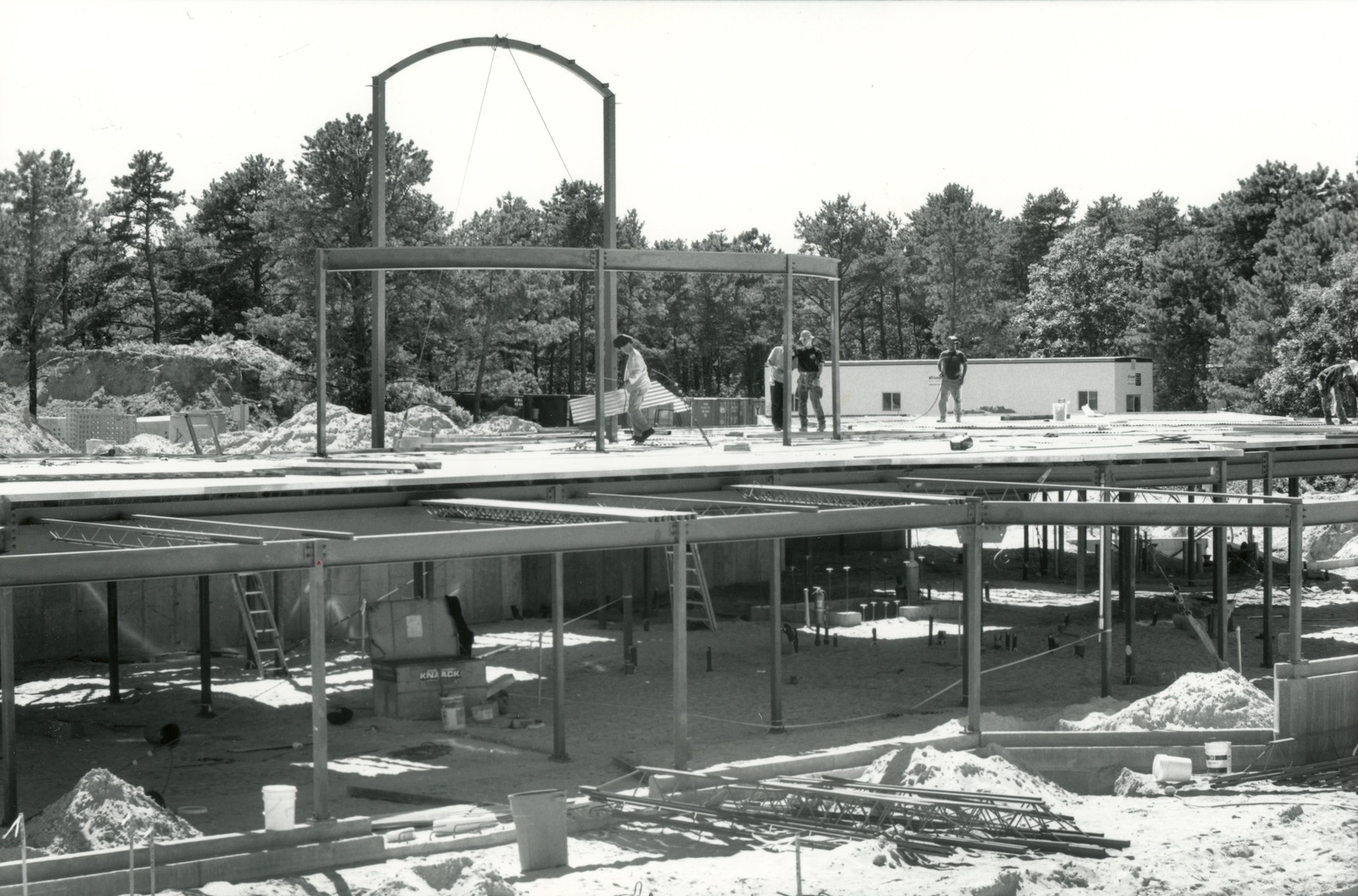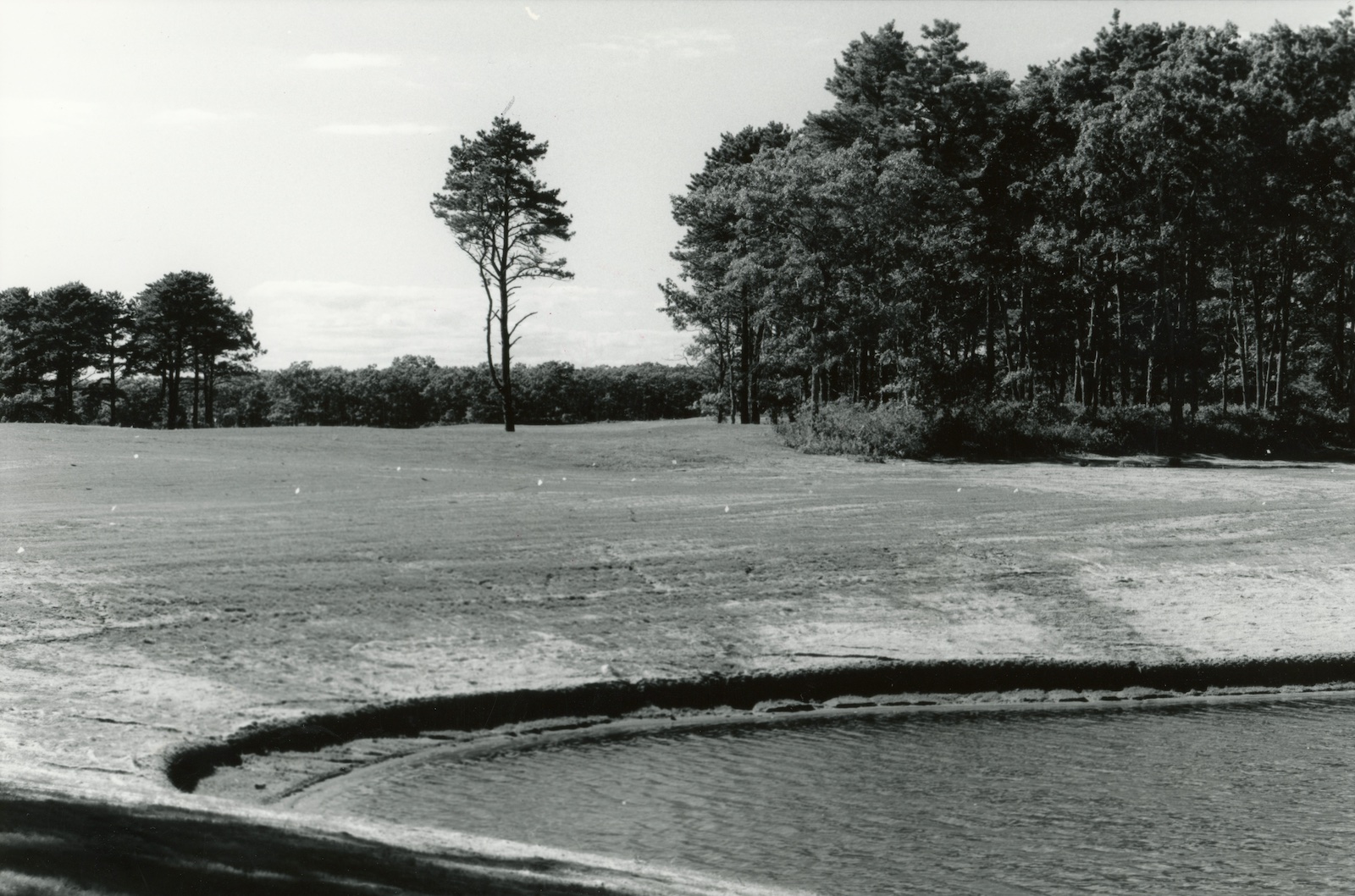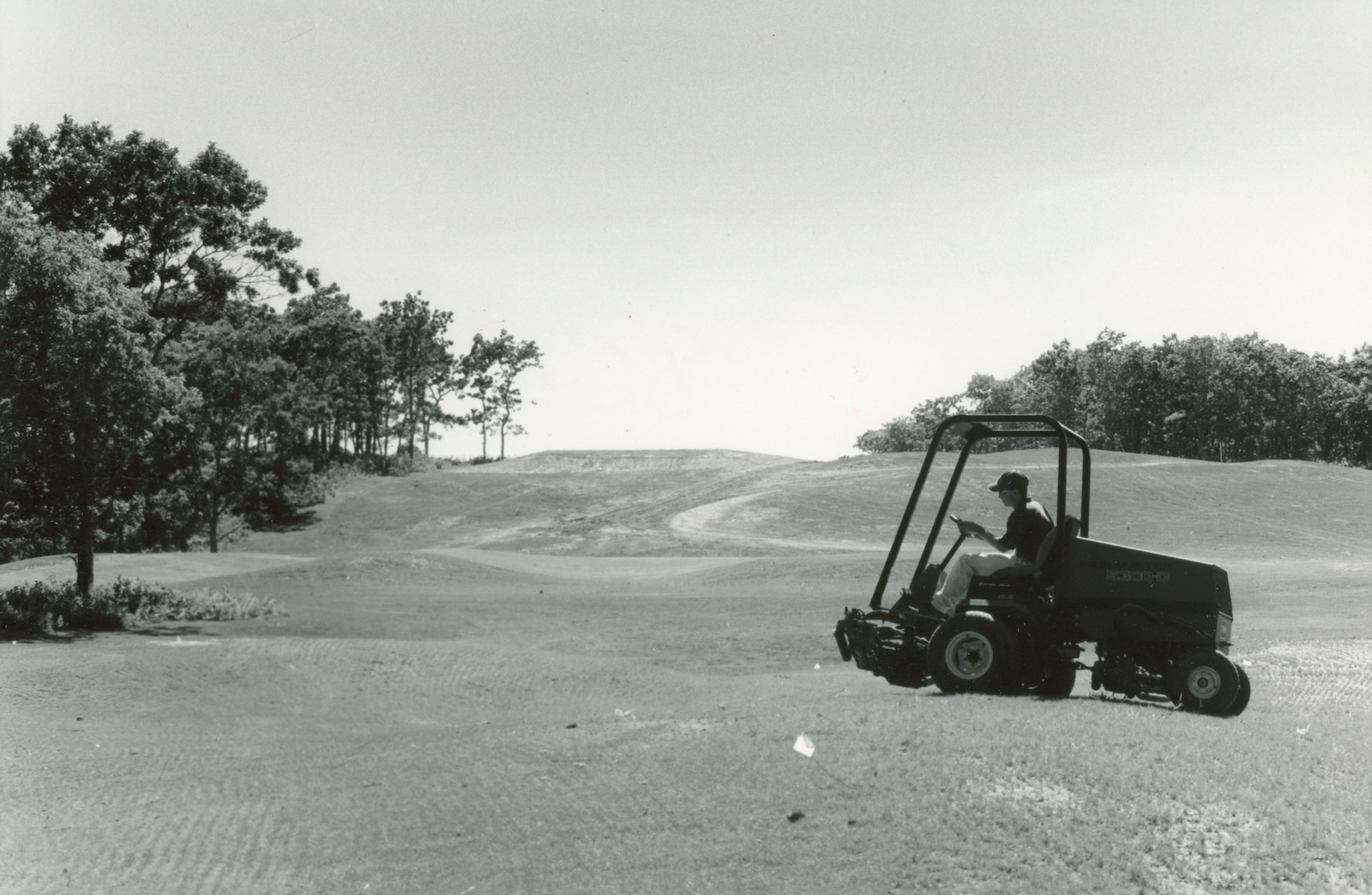Mother Nature is keeping the Vineyard Golf Club under construction until the next summer season.
Even though the fairways and contours of the course are beginning to glow in a shade of bright green, the caretakers of Vineyard Golf Club refuse to open the 71-acre facility until they know it can sustain foot and cart traffic.
“We agreed to do this the right way. It’s really a labor of love,” said Owen Larkin, managing partner of Vineyard Golf Club.
Weeds currently threaten to outgrow the grass, so the caretakers ration the amount of irrigation to limit weed growth. The balance is so delicate that before each mowing, the crew hand weeds every inch of the course.
The winter’s chill and the spring’s heavy rains proved inhospitable for the infant course.
“The winter killed us,” Mr. Larkin said, detailing how they battled thawing and washout. Waiting and watching is a familiar drill for Mr. Larkin and club superintendent Jeff Carlson.
This labor to build an 18-hole. Scottish-style golf course began in late 1998 when developers appealed to the Martha’s Vineyard Commission and the town of Edgartown for permission to develop a course on an old subdivision on the rural perimeters of Edgartown. After a 15-month review process, the MVC approved the project with an exhaustive list of conditions.
“I felt that if golf would survive, courses needed to be more environmentally friendly,” Mr. Larkin said.
Mr. Larkin and partners Jaw Swanson and Billy Van Devender set out to minimize the typical environmental hazards associated with golf course development.
Instead of using the standard 500,000 gallons of water each day to water greens, the Vineyard Golf Club only uses an approved 150,000 gallons from the Edgartown Wastewater Treatment Facility. To keep up with irrigation demands, the club built a 12-million gallon reserve lake to supplement water demands. The pond has been collecting the mandated 150,000 daily gallons through the winter. Now, the nearly full reserve will continue to recycle the some 43.5 inches of rainwater each year.
Another small pond will hold and purify wastewater. The ground below is shielded by lining, and crews will actually tote barrels of water from the pond.
“We literally want to return the water as clean as we received it,” Mr. Larkin said.
While most golf courses use around 35 pesticides to achieve the bright green fairways, the Vineyard Golf Club only uses six organic pest controls. In addition, the developers protected each mound with lining below the turf. An independent review commission periodically measures drainage collected in underground devices to determine levels of nitrogen and other chemicals.
Money proved no object as the developers tried to comply with regional and local mandates. They swallowed a cost of $680,000 to line each mound with protective coating, and the computerized irrigation system cost $1.2 million.

“When I prove this can be done, it will raise the bar for courses all over,” said Mr. Larkin.
The manicured greens and precise bunkers reveal a golf course in its final stages. While these slopes seem unfamiliar without the old stands of trees, they shoe the bare rise and fall of the land.
“We want it to feel like it’s been here for a hundred years,” Mr. Larkin said.
A further scan across the landscape reveals old scrub oaks and pine and larger oaks lining the course’s perimeter and islands within. Blueberries grow among acres of preserved meadows en route to the 18th fairway. Harrier hawks hunt safely above the low-lying scrub oak, and just a few hundred yards away a few acres of one of the Island’s frost bottoms sit undisturbed, supporting a large population of moths.
The remaining trees hide and reveal vistas as the course winds around the holes.
Even the new additions seem to fit into the landscape. The unfinished clubhouse sits low to the ground in an attempt to preserve wooded vistas and clear sight lines, and the rear of the facility will be cultivated with indigenous shrubs and plants now being nurtured on a five-acre plot of land on the property.
Mr. Larkin credits the conscientious efforts of local architect Joanne Filley and golf club superintendent Jeff Carlson. Mr. Larkin smiles when he remembers Mr. Carlson’s walks through the dense meadows to select the trees he wanted to protect. And Mr. Larkin praises Mrs. Filley’s detail in helping design the 18,000-square-foot clubhouse.
“They have the senses of touch that make this project Vineyard through and through,” he said.
A certain rural quality runs along the course’s map. Grass grows through layers of wood chips left from trees that formerly covered the land. Instead of traveling on an asphalt road, the electric carts will bump along a grass-covered country lane.
Golfers ready to test their skills at the Vineyard Golf Club next season will find a course designed to accommodate golfers at every level. Scratch golfers will find distance off the trees, while children, seniors and those with higher handicaps will play a much shorter course.
“A game can be equalized as long as you know your ability,” Mr. Larkin said.
Mr. Larkin smiles as he scans the nearly complete course. He remembers every moment of the three-year struggle to complete his vision.
“It hasn’t been easy. We’ve been grouped with everyone who does golf. But what we’ve been doing is radically different,” Mr. Larkin said.










Comments
Comment policy »